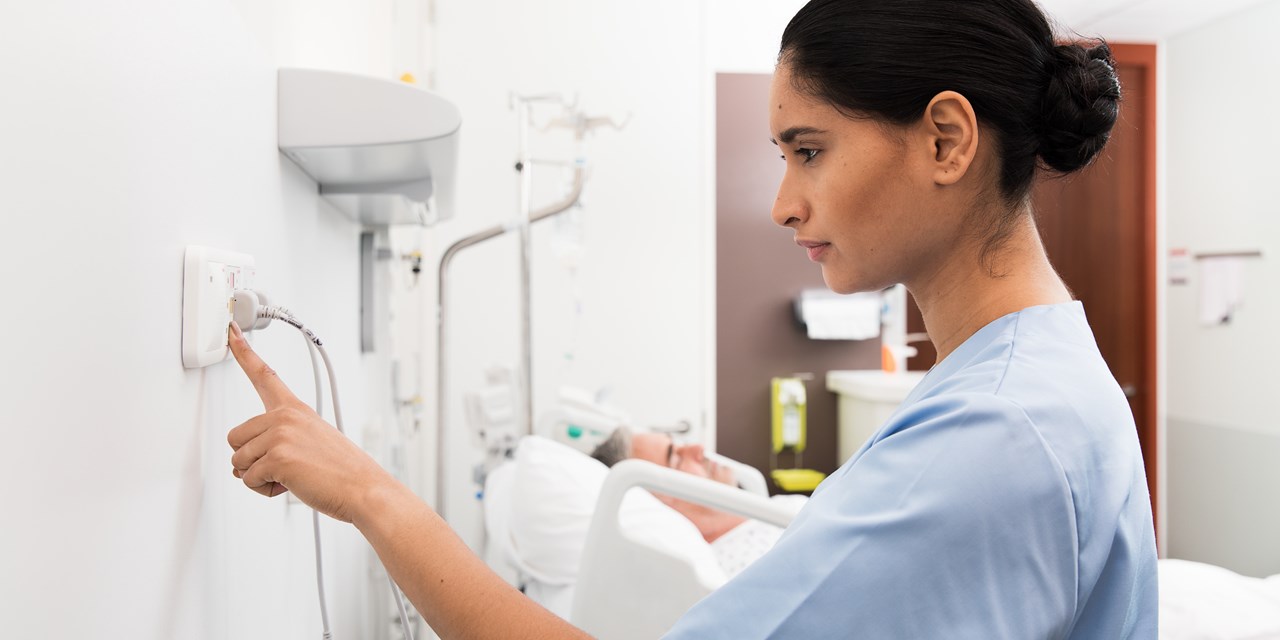Country Selector: Asia
The Managing Director of Ascom Asia, Martin Johansson, explains how enhancing clinical communication can improve operational efficiency and patient safety.

The healthcare landscape is rapidly evolving – an ageing and growing population, coupled with a global shortage of nurses, has caused most hospitals to stretch themselves thin to provide the sort of quality care that their patients expect and deserve.
Thankfully, the medical technology sector has progressed significantly over the past decade, and healthcare providers now have a whole suite of digital solutions to tap on to meet the ever-changing demands of the modern patient.
One simple but effective way hospitals can circumvent the issue of acute staff shortages is through improving their clinical communications capabilities.
Speaking to Hospital Management Asia (HMA), Martin Johansson, the Managing Director of Ascom Asia – global solutions provider focused on healthcare ICT and mobile workflow solutions – elaborated on the impact of clinical communication in healthcare, as he said: “Clinical communication is focused on two-way communication as a core component of delivering care.
“It is communication between caregivers – between nurses, doctors and the medical team – as well as between caregivers and patients. This communication can happen in various forms, like face-to-face, or remotely.
“Or, for example, when patients are in their bed, and they need to get hold of someone, how do they notify the nurses? That is where you have a patient response system, a nurse call solution, or other means of communication to let the nurse know that the patient needs something.
“There are different ways of enabling this communication, but we believe the cornerstone of improving efficiency and patient safety is to enhance clinical communications for the hospital.”
Johansson also explained how improved collaboration – as a result of enhanced clinical communications – can lead to better patient outcomes.
“There are more people in need of healthcare services today, and fewer healthcare providers available to deliver care,” said Johansson. “This is a trend moving forward, because we see an ageing and rising population. To deliver care effectively in a society, there needs to be a better collaboration amongst the people who deliver the care.
“But what might not be possible in the past, in terms of collaboration between workers in different parts of the hospital, is today possible through technology. Using technology as an enabler for collaboration is key to delivering better care and patient outcomes.”
Most hospitals in Asia have yet to invest and use mobility (mobile handsets) to manage and improve clinical communication. According to Johansson, while the ratio of mobile handsets to nurses in many healthcare facilities in Europe is nearly 1:1, the ratio in Asia is at best in some hospitals 1:10.
Johansson elaborated: “Mobility gives caregivers the freedom to initiate communication wherever they are within the facility. Another aspect of this is that in an ICU, daily, a patient generates approximately 2,000 data points. That means that when you have patients in ICU, you would like to monitor their heart rate, oxygen levels, blood pressure and other conditions, depending on the disease or the criticality of the situation for the patient.
“Numerous points are generated continuously. And if the points go past a threshold, certain machines start to beep and blink because that’s the traditional way of alert notification. But what if there is no nurse physically present at the patient’s bed at 3am? What if the nurse is in another room attending to another task?
“However, if the nurse gets that alarm on a handset, they’ll be able to see that it’s critical and leave to attend to that patient immediately. You can never have a one-to-one patient-to-nurse ratio. Yet, this is how hospitals can deploy their workforce more effectively.”
In addition, using mobile devices can reduce the chances of nurses suffering from alarm fatigue.
“If you continue working in an environment every day where you see a lot of blinking, and you hear a lot of beeping, you will naturally get tired,” Johansson mused. “Alarm fatigue could potentially cause nurses to be less attentive, and they may start treating it like routine.”
“It is essential to have a means of filtering out the alarm while also silencing the environment by sending the alarm directly to the handset of the relevant nursing staff and not to everyone.”
With Ascom boasting 18 offices around the world, and over 12,000 hospitals using their solutions, Johansson is confident that they will be able to help hospitals enhance their clinical care delivery.
In particular, Johansson underlined Ascom’s commitment to interoperability. He said: “Interoperability is our strength. We understood very early that we are working in an ecosystem.
“We have interoperability programmes in Ascom where other members can come and test their functionality and systems with Ascom technology. In the whole communication platform, we have our handset certified with all the big PBX (Private Branch Exchange) vendors, as well as other big WIFI-provider vendors.
“In terms of upstream, we work with medical device producers such as Dräger, GE, Hamilton and more, including ventilator providers, infusion pump providers, and we have made it to our strength that we have over 300 interoperability providers through any such brand or mode of medical device.
“”We position ourselves as brand agnostic and vendor-neutral. Interoperability for us is to help healthcare providers expand easily.”
“We have also made a conscious decision about what not to do and what to enhance, so we can help hospitals from the very beginning by providing the right infrastructure for communication needs. Once the hospital is up-and-running, we can give them tools to enhance the clinical care delivery of patient monitoring, messaging, and more.”